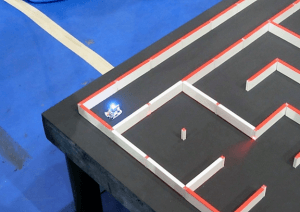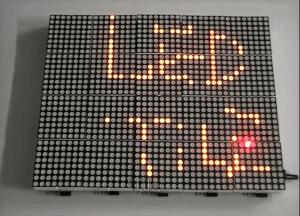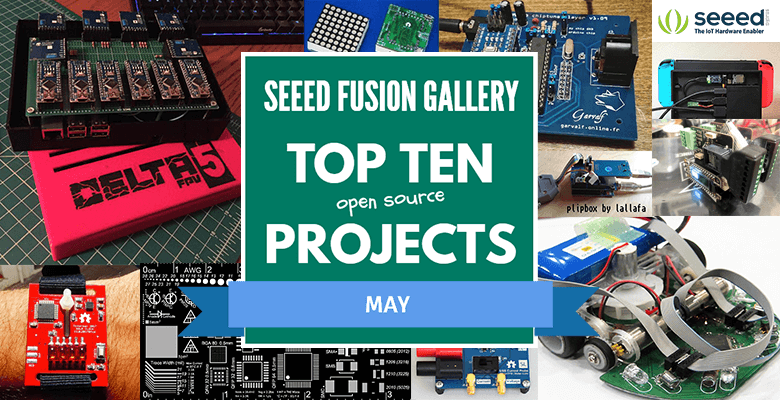Seeed Fusion Gallery Top Ten Projects – May 2018
It’s our big birthday next month (August 2018)! To celebrate, get $5 off any Seeed Fusion order over $10 from PCB fabrication, PCB Assembly to 3D printing, CNC milling and more! Celebrate with us!
Every month, we’ll draw up a chart of the most popular projects shared on the Seeed Fusion Gallery that featured on the Seeed Studios Facebook and Twitter channels. Only the most interesting, useful, controversial or trendy projects make the cut. The top three sharers have a $50USD coupon waiting for them in their inbox and the next two runner-ups get $20USD!
Narrowing down the top ten justs gets harder and harder. This month features many content-rich projects spanning a diverse range of fields and communities from gamers, FPV drone racers, legacy computer hackers to the traditional tinkerer.
Projects shared on the Seeed Fusion Gallery are open source and free for anyone to download, modify or order straight from the Gallery. Click on the links for the Gerber files and more information!
   |
Delta 5 Race Timer v2.0shared by Chin Scott Domestic drones are not just for spying on the neighbor’s cat or passing the chips. FPV drone racing is an intense sport with clubs competing against each other in F1-style competitions worldwide. FPV stands for First Person View, which makes for a VR-gaming like experience that requires a mix of state of the art tech and tinkered inventions such as the popular Delta 5 Race Timer by Chin Scott. Named after his racing group, the multi-node timing system uses 5.8GHz radio signals to mark the precise time up to 8 individual drones cross the finish line. Each node uses an Arduino Nano and a modified RX5808 receiver connected to a central Raspberry Pi on the main board (6 node version linked). There is even a web server with a neat GUI. We particularly like how a member of a focused community went out of his way to develop a cheaper and possibly better alternative to commercial products, and then completely share it to fellow competitors and hobbyists. Everything is open sourced and instructions are detailed. The entire design from parts to assembly to software set-up is simple and accessible. In return, much of the community is incredibly grateful and supportive, with fans making assembly videos, reviews and even developing it further. Power to Open Source. |
Decimus 5B Micromouseshared by Peter Harrison Micromouse contests are also held worldwide except they are somewhat less adrenaline pumping and more about sticking to the ground. The goal is for the mouse-sized robots to navigate their way into the target area of a table-top sized maze fastest. There are two phases, first, an exploration phase where the mouse is free to roam and map out the maze. Using the data collected, the mouse can then calculate the fastest route. The second phase consists of multiple runs of racing from start to finish at increasing speeds without crashing. The mouse with the fastest time wins. The first ever competition was held in 1979 by IEEE Spectrum, where the requirement was simply to navigate out of the maze. The winner hugged walls, quickly. Nowadays, Micromice are mini feats of engineering combining intelligent maze-solving algorithms, intricate mechanics and computing power. The Decimus 5B Micromouse is Peter’s latest design, featuring a bottom suction cup to provide grip when whizzing around the maze. |
    |
   |
LED Tileshared by Akita11 Ever wanted to be able to draw with a laser pointer? You can now. These expandable LED dot matrix units light up in response to laser light and employ a 3-axis acceleration sensor to elegantly “push” the spots off to the side when tilted. Imagine what you could do with a wall of these? Detailed video demonstration and explanation (in Japanese only) shows you the matrix in action. GitHub repository also available. |
| Runner Ups – Not in the top three but honorable mentions nonetheless. 4th and 5th place get a $20USD coupon! | |
Solr: A Digital Wristwatchshared by Xose There is a legend (they say a false myth) that tells that a long time ago people from Sant Pol restored an old sun dial that had been corrupted by the action of sun and rain. To prevent that from happening again, they decided to cover the sundial with a roof top, effectively driving it useless. Since then people from neighboring towns used to laugh at people from Sant Pol saying “Sant pol quin’hora és?” (Sant Pol, what time is it?) whenever they happen to meet a local. The Solr digital wrist watch is a clock that won’t work without a battery but it will neither work without sun. Even more: the vintage display is really cool but it’s hard to read outdoors. A complete nonsense. It is almost a joke and some might easily file it under the “useless projects” label. But it’s still quite useful. Whether you don’t care about accuracy, or if you need an excuse to always be late. Or maybe you want your daughter to raise her eyebrows and tenderly call you a “freak”. Either case, I suggest you to proudly wear a Solr. |

|
  |
Add a few sounds to the Nintendo Switchshared by Hiroji Hidaki Another Japanese gimmick for gaming enthusiasts. This little mod can play iconic retro sounds when the Nintendo Switch gaming system is moved to and from its dock. Using an Adafruit Trinket, a DFPlayer and a proximity sensor, the device senses when the console is inserted or removed and plays an MP3 file loaded in the micro SD card. It’s a simple set-up and can be easily applied to many other applications. Gamers can revel at the nostalgic jingles of Zelda and Mario or any sound they like, even recorded speech. Imagine greeting customers with a personal message upon entering your humble abode. Or, to help with weight loss, a cookie jar that spews out abuse when raided? That could help lose the pounds.. and self-confidence.. Check out the video and blog (Japanese only) |
Garvuinoshared by Arniex How about a board for making your own retro tunes? The Garvuino is a chiptunes player and synthesizer using an Arduino Nano and an Atmega8 chip, capable of AY-308910 and SID emulation, Mozzi sound synthesis and single-bit music playback. A great project for Arduino students, the documentation is complete with assembly instructions, user guides, software setup and useful references for the beginner. |
 |
 |
plipboxshared by Paul Implementation of lallafa’s plipbox design which uses an Arduino Nano and ethernet shield to connect an Amiga to a network or the internet. This version includes an optional RS232 transceiver so that the plipbox can be configured from the Amiga’s serial port, rather than just over USB. |
PCB Business Cardshared by Ilia PCB Business card, designed to get client’s attention. Open source design using Circuit Maker. Many of you may have seen the Adafruit PCB ruler (also used by the awesome Voltera). The design was actually adapted from my own design back in University! To improve on the original idea, I have created a reference business card. I wanted to show every common component I could think of, and how they relate. Often when zoomed all the way into a digital design, you can lose track of what 5 mils really means. It is TINY! |
  |
|
|
Three-Phase Energy Monitor – ATM90E3x Featherwingshared by Whatnick After successfully building the single-phase energy monitor with the ATM90E26, there has been lots of interest in the 3-phase version. Being an open-hardware project, many people have created remixed and derived versions as well. After a while, I started receiving requests to assist with the code for ATM90E36, the 3-phase version of the Energy Monitor chip. However, I did not have the hardware to test the code, so I put together this basic devkit to access the SPI bus and easily inject voltage and CT signals to take the ATM90E36 through its paces. |
USB Current Probeshared by Stefan Luethi This device is intended for measuring current consumed by a USB device. Measuring the DC current is easily achievable by using a multimeter. However, for debugging purpose it is often more interesting to see how the current consumption changes. Especially in low power applications, it is necessary to check whether the microcontroller is in sleep mode or not. So, the USB Current Probe is an addition to the multimeter and can be hooked up to an oscilloscope. There are two shunts for two current ranges (1uA…1mA, 1mA…1A). The output is a voltage signal on an SMA connector. |
 |
How can you share your designs on the Seeed Fusion Gallery? Simple, every time you successfully place an order on Seeed Fusion, you will have the option to upload production and design files, add pictures and write a little something about your project. Anyone can then download the files or place the exact same order with the click of a button. Also, every day, we will pick some interesting projects and share them with our friends on Facebook and Twitter. Oh, and did we mention that you’ll get a $5 coupon just for sharing? Give it a try it.
To see more designs and see what Seeed Studios is getting up to, be sure to follow us on Facebook and Twitter or visit the Seeed Fusion Gallery directly.
Thank you all for sharing!
ALSO! It’s Seeed’s birthday next month (we’re reaching double digits), so to celebrate, we’re giving you $5 off for every Seeed Fusion Order over $10. Learn more >>
Stay tuned! There’ll be more reasons to celebrate and party soon!
You may also like:
SEEED FUSION GALLERY TOP TEN PROJECTS – JUNE 2018
SEEED FUSION GALLERY TOP TEN PROJECTS – APRIL 2018
SEEED FUSION GALLERY TOP TEN PROJECTS – MARCH 2018
Celebrate 10 Years of Seeed with $5 off Seeed Fusion Prototyping


